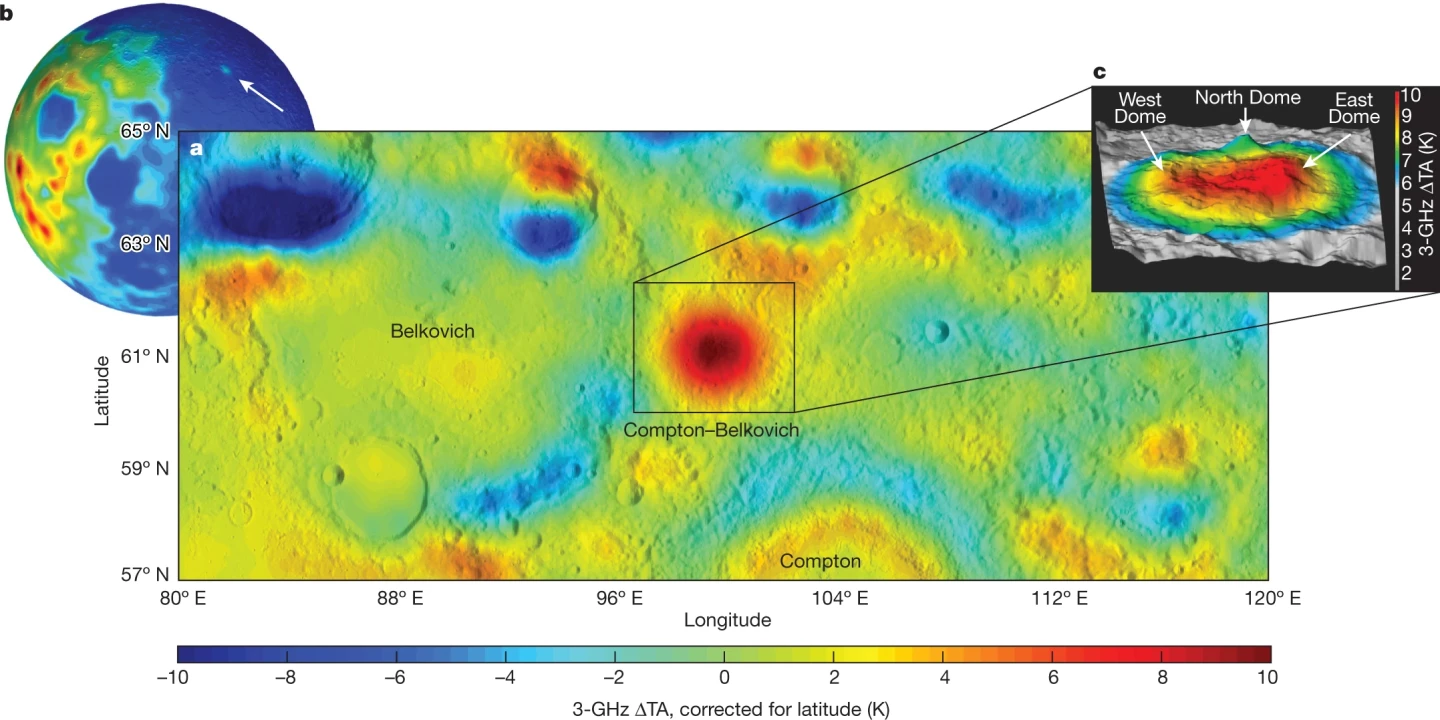Using microwave instruments to peer deep beneath the surface of the far side of the Moon, researchers have detected a ‘hotspot’ they say is a large subsurface granite mass, suggesting the Moon is more "Earth-like" than we thought.
Granite rocks are common on Earth due to our planet’s abundant water and tectonic plates, which help to melt and recycle materials in the planet’s crust. They’re almost absent elsewhere in the solar system, though. But now, a new study has made an unexpected discovery: a large granite mass on the far side of the Moon.
The uncrewed Chinese lunar spacecraft, Chang’e 1 and Chang’e 2, picked up the discovery using microwave instruments. Researchers supplemented the data collected from the orbiters with data from NASA’s Lunar Reconnaissance Orbiter (LRO) and older information gathered from the Lunar Prospector, the Gravity Recovery and Interior Laboratory (GRAIL), Chandrayaan-1 and Apollo missions.
“Using an instrument looking at microwave wavelengths – longer than infrared – sent to the Moon on both the Chinese Chang’e 1 and 2 orbiters, we have been able to map temperatures below the surface,” said Matthew Siegler, the study’s lead author.
Due to its longer wavelengths, microwave radiometry lets scientists peer beneath the surface at greater depths, measuring the subsurface physical temperature at around 1 ft to 18 ft (0.3 m to 5.6 m). What the researchers found between the ancient Compton and Belkovich impact craters on the Moon’s mysterious far side was a ‘hotspot’ that topography couldn’t explain. The only plausible explanation they could come up with was that it was an enhanced subsurface geothermal heat source.
“We have discovered extra heat coming out of the ground at a location on the Moon believed to be a long-dead volcano which last erupted over 3.5 billion years ago,” Siegler said. “It’s around 50 km (31 miles) across, and the only solution that we can think of which produces that much heat is a large body of granite, a rock that forms when a magma body – the unerupted lava – below a volcano cools. Granite has high concentrations of radioactive elements like uranium and thorium compared to other rocks in the lunar crust, causing the heating we can sense at the lunar surface.”

The researchers concluded that the large volcano was once fed by a much larger granite magma chamber underneath it. Apollo missions had brought back small samples of granitic material from the Moon, but nothing on this scale. The feature’s magnitude suggests that the Moon is more like our planet than was previously thought, the researchers say.
“This is more Earth-like than we had imagined can be produced on the Moon, which lacks the water and plate tectonics that help granites form on Earth,” said Siegler. “What this also does is show that remote sensing can pick up hidden features, and this will be useful in the exploration of other planetary bodies in the solar system.”
The researchers will present their findings at the Goldschmidt Conference in Lyon, France, on 12th July 2023, and the study was published in the journal Nature.
Source: Planetary Science Institute, EurekAlert!






